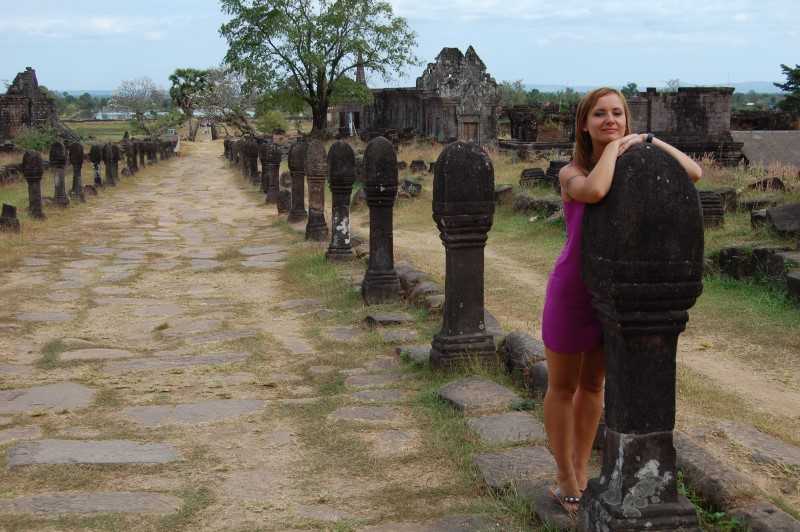Wat Phu Temple is located about 40 kilometers south of Pakse in Champasak Province. Fortunately, you will have a good excuse use the Lao-Nippon bridge to cross over the Mekong River as you leave Pakse. This bridge is unique as it is the only bridge in Laos that is located entirely within it’s borders. Unlike the friendship bridges with Thailand which are technically split in half over the Thai border.
Pakse to Wat Phu
Below is a photo of the Lao-Nippon bridge with the city of Pakse on the far river bank. The drive from Pakse to Wat Phu is very scenic and takes about an hour. After crossing the bridge from Pakse, go south towards Muang Champasak and follow the Mekong River.
In other words, After you get across the bridge hang your next left and it is a straight run right into the grounds of Wat Phu.
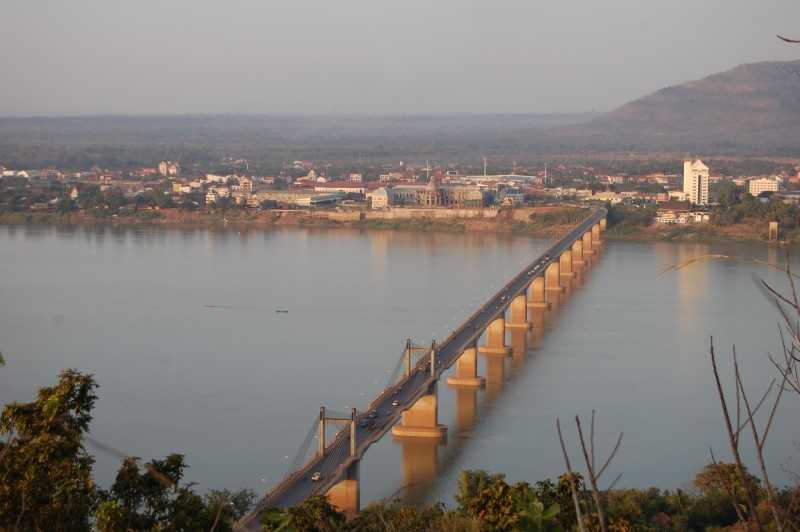
History of the Wat Phu Temple
Wat Phu Temple was built on the ruins of a 5th century Khmer Hindu Shrine. The existence of the temple is a stark example of the profound influence that the Khmer kingdom has had on Lao cultural history. In fact, there was even an ancient road running from the Wat Phu complex directly to Angkor Wat in Cambodia.
Although the initial structure dates back to the 5th century, the structures that are observable today date back to the 11-13th centuries. Wat Phu Temple has since been converted to Theravada Buddhism and at present it is actively used for that purpose.
Initially, the location was considered ideal for a Hindu temple due to the adjacent mountain peak being conspicuously shaped like a linga. Thus, the mountain was considered to be the home of the Hindu God Shiva. Accordingly, the mountain was named “Lingaparvata Mountain” although the name was subsequently changed to Phou Khao.

Unfortunately, the ultimate summit of Phou Khao is not directly observable as you walk on the path towards the sacred mountain. Therefore, I have included a second photo below taken from a different angle.
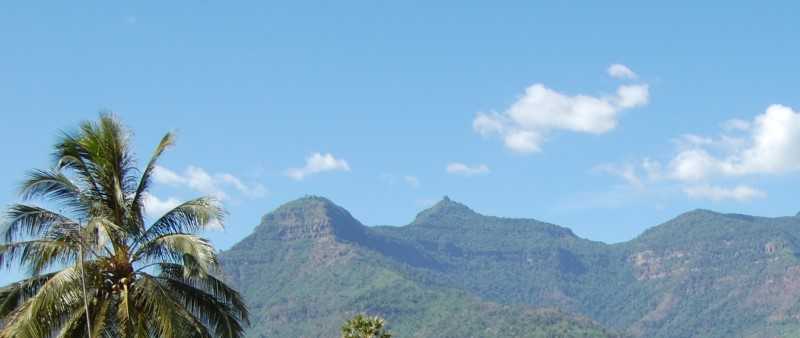
Entrance to the Temple Complex
As you enter the Wat Phu Temple grounds the first structures that you will encounter are called the north and south palaces. The pathway lined with lingas will lead you directly in between the two palaces. Unfortunately, archeologists are still a bit unclear as to what the actual purpose of the 2 palaces really was.

After passing the palaces you will then begin climbing up a succession of terraces that leads you to the sanctuary.
Firstly, you will arrive at the location of small shrine dedicated to Shiva’s mount “Nandi”. The location of the Nandi shrine is of significance because that was formerly the starting point of the road connecting Wat Phu with the ancient Khmer city of Angkor.
Walking the Terraces at Wat Phu
The stairway leading up the terraces has been heavily affected over time. However, it actually makes the hike very enjoyable as you pass under the trees.
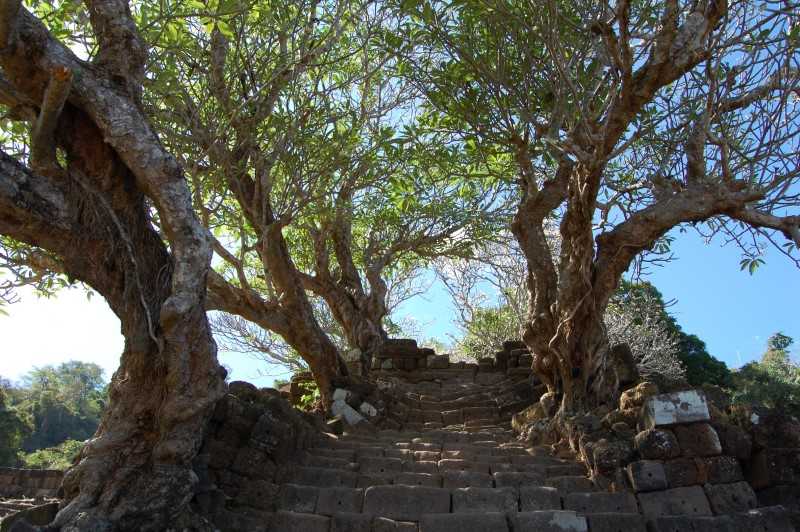

The Wat Phu Sanctuary
When you are finished crossing over the 7 sandstone terraces you will reach the central sanctuary. Constructed at the base of a cliff, the sanctuary has a front and a back half.

The rear chamber formerly housed the linga. Unfortunately, the roof that covered the linga in the rear chamber has since caved in and was never repaired. Relatively speaking, the sanctuary is still in really good condition considering the original construction was in the 10th century!
In former times, the linga was continuously bathed with the fresh spring water that emerges at the base of the cliff. Previously, the water was channeled 60 meters from the base of the cliff. Unfortunately, the linga chamber no longer exists and therefore the channel is obsolete.
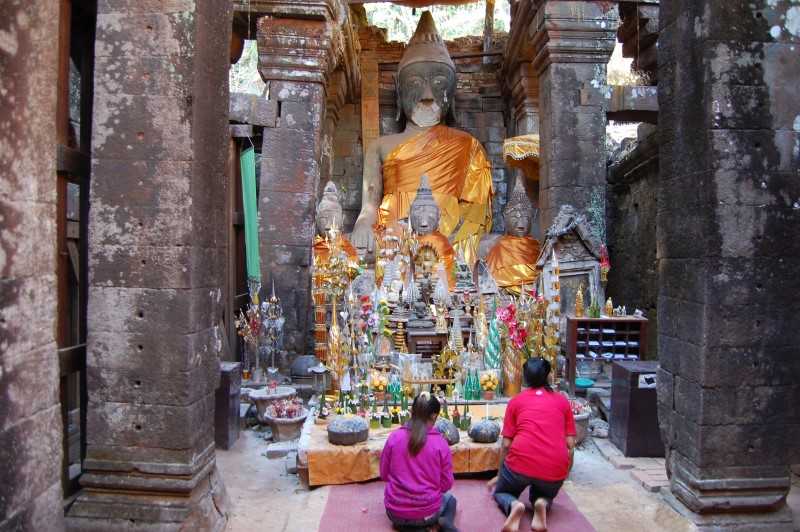
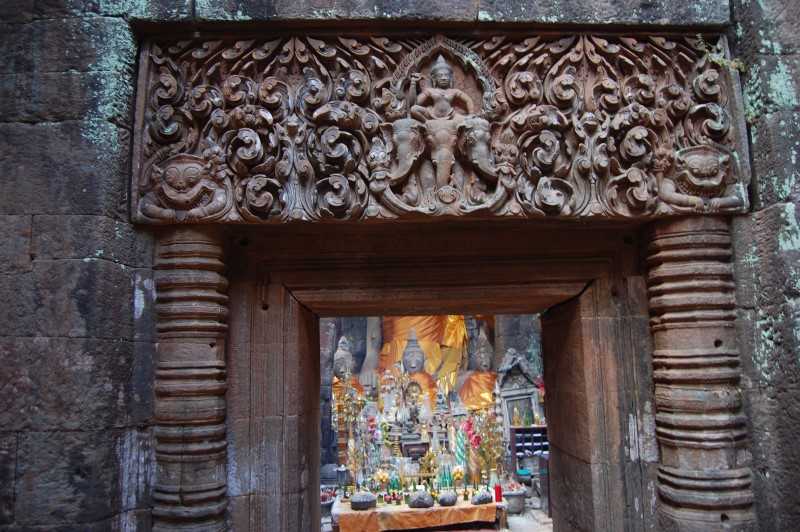
Wat Phu Temple Cliff
The cliff face is seen in the background of the photo and the fresh water spring is found at the base of the cliff.
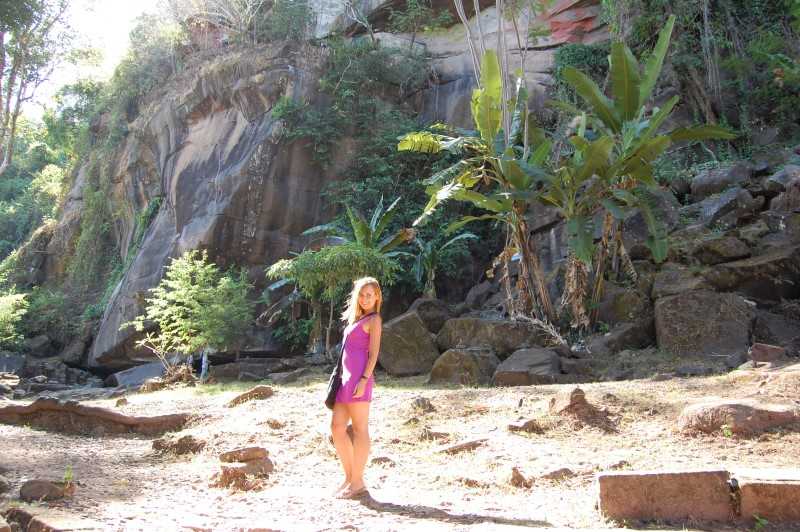
Amazingly, the fresh water spring still emerges from the base of the cliff just as it did many centuries ago. The water used to be channeled to the rear chamber of the sanctuary where the water continuously bathed the linga.
However, it appears maintenance of the linga chamber was not a priority after the sanctuary was converted to Buddhism.

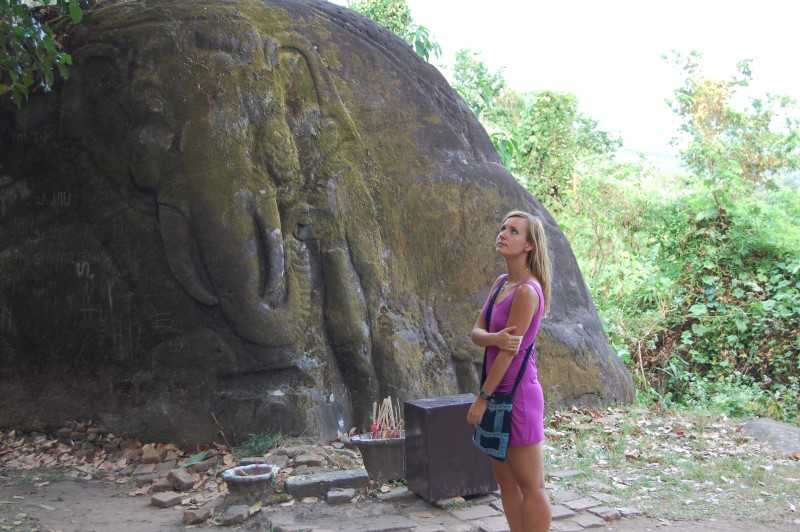
Champasak Province is an Excellent Adventure
Wat Phu is of huge cultural significance to both Laos and Cambodia. Additionally, it is a great follow up from our trip to the Pakse Golden Buddha. Plus, the drive is equally nostalgic as you cruise along the banks of the Mekong river. There is a nice selection of cafes in Champasak to stop off at as you pass through town on your way back to Pakse.
